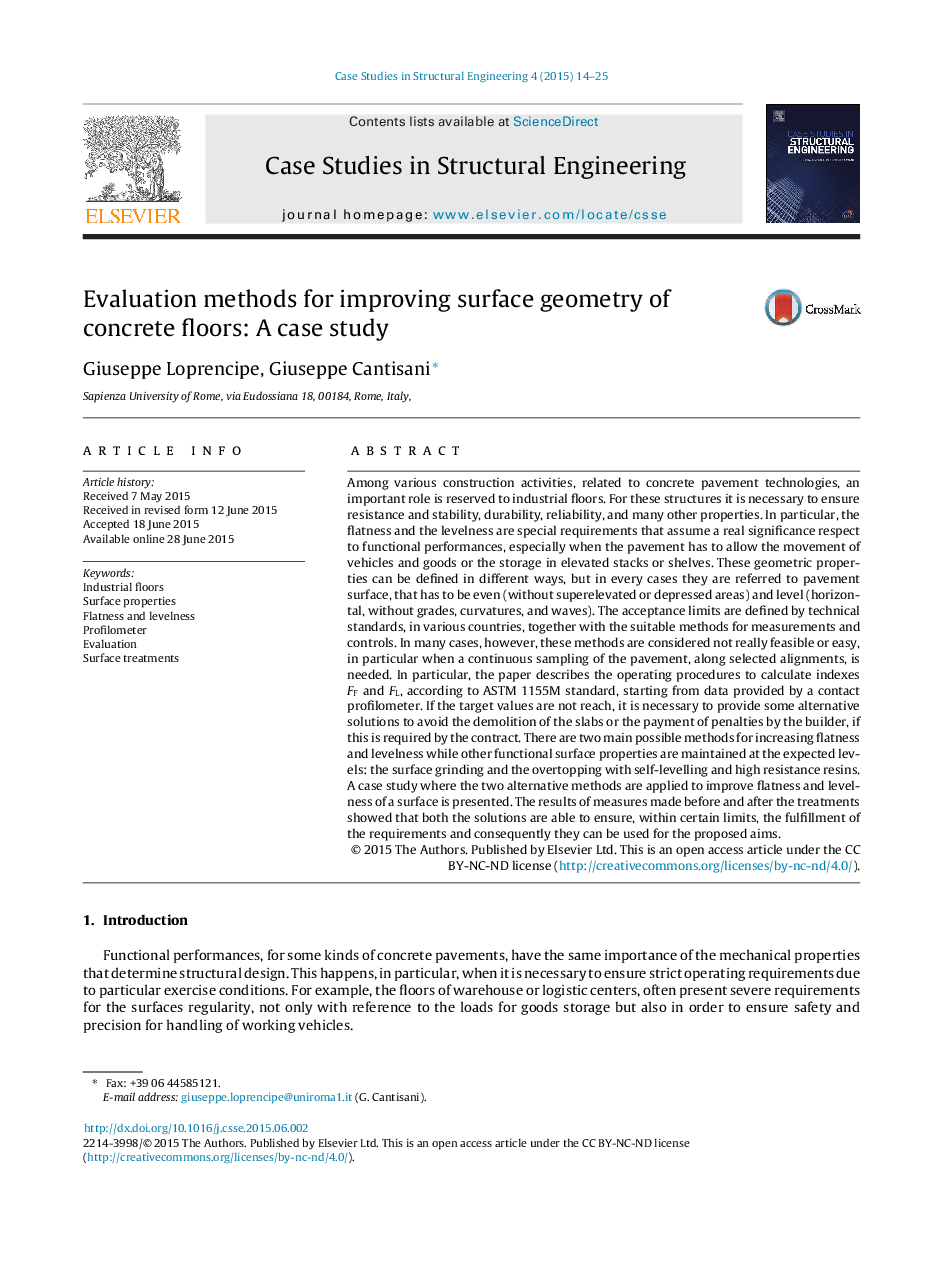| Article ID | Journal | Published Year | Pages | File Type |
|---|---|---|---|---|
| 250597 | Case Studies in Structural Engineering | 2015 | 12 Pages |
•Flatness and levelness definition for industrial cement surface floors.•Acceptance limits and methods for measurements for different technical standards.•Some alternative solutions for improving surface geometry.•Presentation of a case study with two alternative solutions to improve flatness and levelness is presented.•Efficacy of the alternative solutions to ensure the fulfillment of the requirements.
Among various construction activities, related to concrete pavement technologies, an important role is reserved to industrial floors. For these structures it is necessary to ensure resistance and stability, durability, reliability, and many other properties. In particular, the flatness and the levelness are special requirements that assume a real significance respect to functional performances, especially when the pavement has to allow the movement of vehicles and goods or the storage in elevated stacks or shelves. These geometric properties can be defined in different ways, but in every cases they are referred to pavement surface, that has to be even (without superelevated or depressed areas) and level (horizontal, without grades, curvatures, and waves). The acceptance limits are defined by technical standards, in various countries, together with the suitable methods for measurements and controls. In many cases, however, these methods are considered not really feasible or easy, in particular when a continuous sampling of the pavement, along selected alignments, is needed. In particular, the paper describes the operating procedures to calculate indexes FF and FL, according to ASTM 1155M standard, starting from data provided by a contact profilometer. If the target values are not reach, it is necessary to provide some alternative solutions to avoid the demolition of the slabs or the payment of penalties by the builder, if this is required by the contract. There are two main possible methods for increasing flatness and levelness while other functional surface properties are maintained at the expected levels: the surface grinding and the overtopping with self-levelling and high resistance resins. A case study where the two alternative methods are applied to improve flatness and levelness of a surface is presented. The results of measures made before and after the treatments showed that both the solutions are able to ensure, within certain limits, the fulfillment of the requirements and consequently they can be used for the proposed aims.
